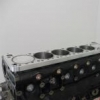Rb34 / 24U (Rb26 + 800Cc) - Project RB high deck engine (and related builds)
Announcements
-
Latest Posts
-
swaybar swaybar swaybar swaybar swaybar anyway OP, what is currently in your car, are they factory shocks and sway bar? Any sign anything else has been changed under there over the years? And as Murray said....what are effect you looking to change
-
Congratulations on your find Did you mean it has 6k miles or was that a typo? Firstly, keep in mind some movement of the shifter is normal...it is a long rod hanging out of a box bolted to the engine. Having said that there are 2 next places to look: 1. Transmission and engine mounts. If these are worn or broken the shifter will move around more. They are reasonably easy to source and replace on a hoist, and possible but uncomfortable to replace car stands 2. On the bottom of the shifter there is a nylon cup that sits over shifter's ball end. If this is worn or broken the shifter will move around more than it should (but will still shift OK). That is a cheap part and requires removal of centre console, rubber shifter hole covers and a circlip in the gearbox shifter hole to remove the shifter. Re maintenance, as with any new import you should change all the fluids including transmission when you get it; never trust the seller and previous owners to have done the right thing. I am pretty sure R34 GTT is the same as earlier big box transmissions, so use any good quality GL4 75w90 trans fluid if it is shifting well (if it is hard to shift due to synchro wear, redline shockproof lightweight will keep it alive a bit longer before rebuild is required)
-
By Chris_Guthrie · Posted
Well considering I have the exact same problem with that as the original one I don't think that the ignitor is the problem. I would imagine that this being such an uncommon problem the possibility of getting a new ignitor that is bad in the same way as the old one has to be very slim. I'll definitely pull everything apart this weekend and check the turbo out. Got quite a bit of things to check out Saturday like fuel pressure and the pcv so I'll report back once I do that. Thanks everyone for all the replies this is all really helpful -
By TurboTapin · Posted
Rb's have issues with bottom end starvation, not head starvation. Which either way, you probably wouldn't ever see on a dyno. Strange... What's pump gas for you? Octane rating?
-




Recommended Posts
Create an account or sign in to comment
You need to be a member in order to leave a comment
Create an account
Sign up for a new account in our community. It's easy!
Register a new accountSign in
Already have an account? Sign in here.
Sign In Now